
My Unfiltered Charcoal Journey: Dust, Drama, & The Soul of Abstract Art
Explore my personal journey with charcoal, from ancient roots to its vital role in my abstract art. Discover its expressive power, practical tools, meditative qualities, and how it fosters creative freedom.
My Unfiltered Journey with Charcoal: Dust, Drama, and Discovery in Art
So, you know how sometimes you stumble upon something, and it just clicks? For me, that 'thing' was charcoal. I used to see it as just ground-up burnt wood, after all! Initially, I approached it with a mix of apprehension and, frankly, a bit of skepticism. All that dust! All that potential for smudging! It felt a bit… well, primitive, didn't it? Especially coming from a world of vibrant acrylics and mixed media. But oh, how wrong I was about this ancient, humble medium. This isn't just black dust; it's a gateway to soul, drama, and an honesty that still captivates me, leading to unexpected discoveries in my art and my process. For me, it's become a foundational experience, a direct conversation with the very essence of mark-making.
Charcoal: An Ancient Dialogue, Echoing Across Millennia
Before we dive into my personal love affair, it’s worth a quick nod to charcoal's incredible lineage. This isn't some fleeting trend; artists have been using burnt wood to make marks since prehistoric cave paintings. Imagine those early artists, perhaps using charred branches of readily available woods like willow, vine, or even birch from their campfires. These various woods, when burned, create charcoal with subtly different densities and tones – from the light, delicate marks of vine charcoal to the richer, darker hues of harder woods. Think about the awe-inspiring cave art of Lascaux or Altamira for a second – a medium connecting us directly to our earliest creative ancestors! It’s the rawest form of expression, bypassing complex tools or palettes, and getting straight to the heart of light and shadow. Perhaps that’s why it feels so inherently primitive yet profoundly powerful; it allows for an immediate, unfiltered expression that speaks a universal visual language, echoing across millennia.
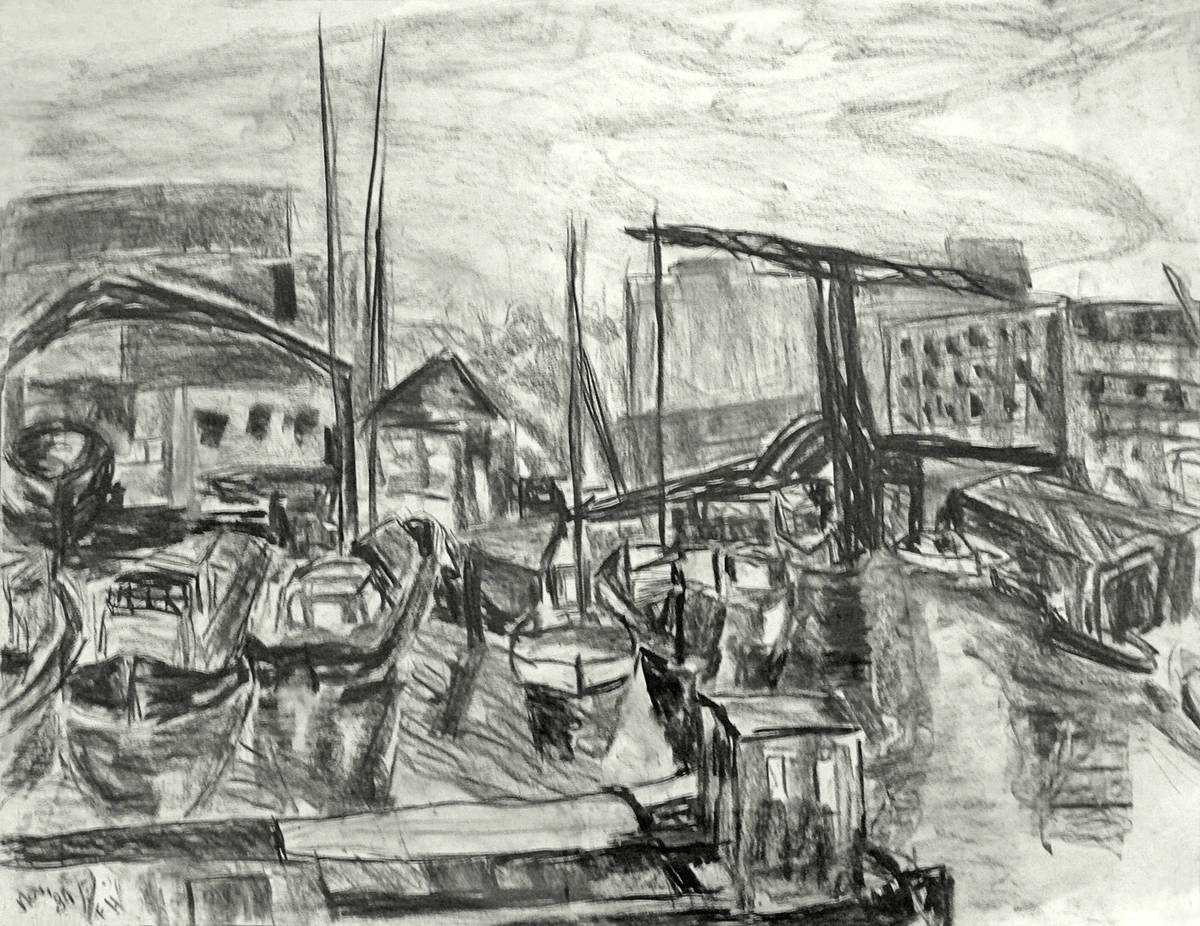
The Irresistible Pull of Black and White: Stripping Away Distraction
There’s an undeniable power in stripping away color. It forces you, and the viewer, to focus purely on value, form, and texture. When I first started really exploring charcoal, it was like someone turned down the volume on the world, leaving only the essential melody. No distractions from color choices; just the stark, beautiful contrast of light and shadow playing across the paper. What's more, monochrome can uniquely emphasize surface textures and sculptural forms in a way that color often obscures, allowing for a deeper exploration of a subject's physicality.
This stark purity strips away distraction, compelling me to confront the core emotions of a scene or subject without the 'noise' of hue. It’s a language that speaks directly to the gut, you know? Psychologically, monochrome work often evokes a sense of timelessness, introspection, or drama, focusing our attention on composition and feeling rather than the sensory explosion of color. It's almost like a conversation with a wise, old friend who cuts straight to the point. No beating around the bush. Just pure expressive force. I found myself drawn to creating intense, almost raw portraits, where every shadow and highlight tells a story. Look at the dramatic intensity you can achieve:

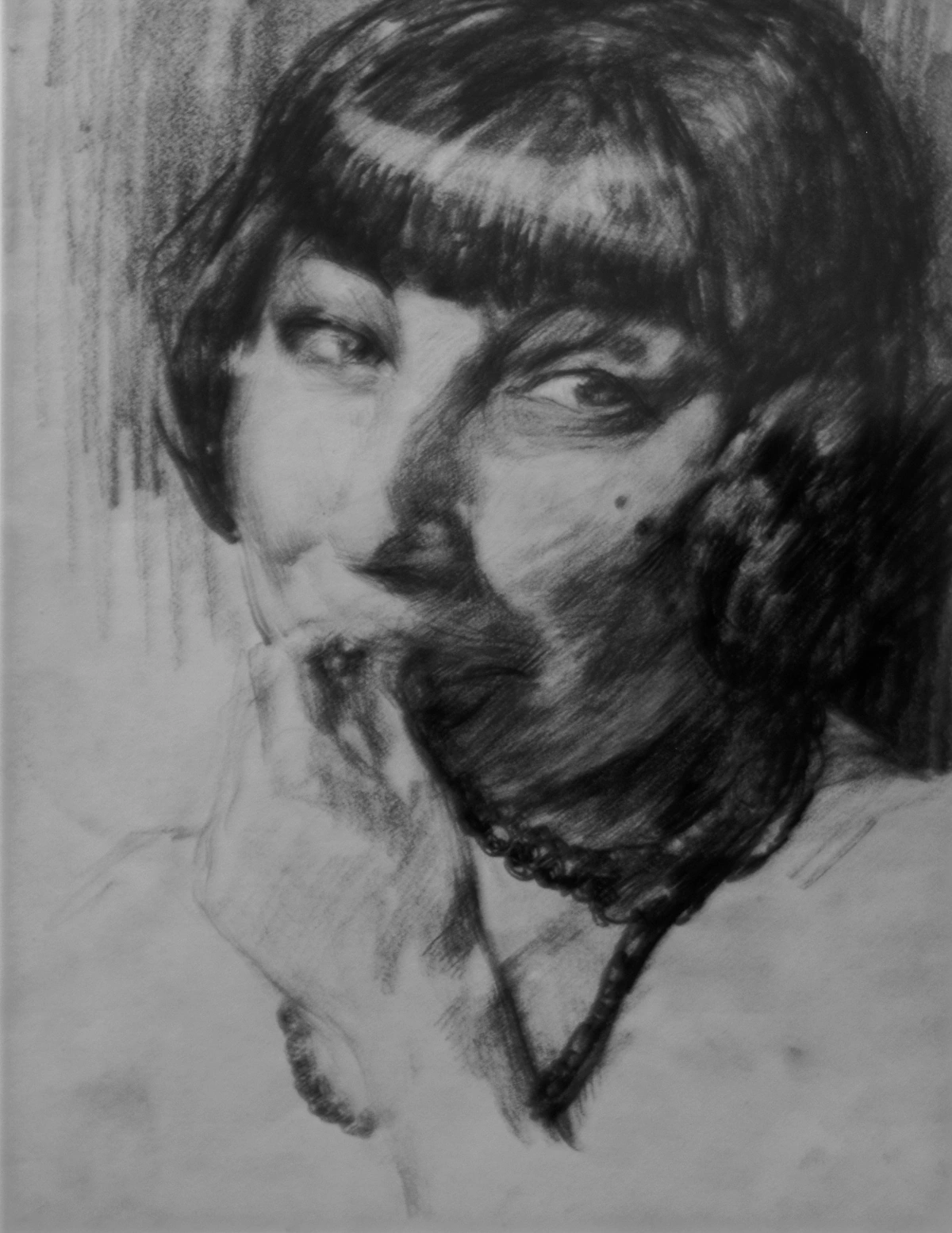
Embracing the Beautiful Mess (and the Eraser): The Freedom of Dust
Now, about that dust and smudging. What once seemed like a drawback became one of charcoal's greatest strengths for me. It encourages a looseness, an imperfection, a willingness to let go that I sometimes struggle with in other mediums. It's almost as if the medium has a will of its own, inviting a more responsive and less controlled touch. Mistakes aren't permanent sentences; they're opportunities for redirection. You can literally wipe away parts of your drawing – that's not just correcting errors; it’s an active part of the drawing process, shaping light from shadow, and even using the dust itself as a medium to create soft, atmospheric effects.
This freedom is incredibly liberating. It's a wonderful lesson in embracing accidents and evolution in art. I remember one time, I was working on a portrait, meticulously trying to define the jawline, and it just wasn’t clicking. I got so exasperated that I half-heartedly smeared my palm across the struggling area, sighing dramatically. But then, to my utter surprise, that frustrated smudge created a soft, atmospheric shadow, pushing the jawline back into the composition in a way I hadn’t envisioned. It wasn’t a mistake; it was an invitation to a new path, a whisper from the charcoal saying, “Hey, loosen up, genius!” It completely changed the direction of the piece, and for the better. Charcoal whispers, "Don't take yourself too seriously." And honestly, sometimes that's exactly what I need to hear.
Speaking of erasing, it's not a one-size-fits-all tool. My go-to is often a kneaded eraser – that magical, pliable blob that lifts charcoal with precision without damaging the paper. For more aggressive removal, a rubber eraser can be effective, though you need to be careful not to abrade the paper surface. And for super fine details or creating crisp highlights, an electric eraser can be a game-changer, allowing you to draw with the eraser almost like a pencil.
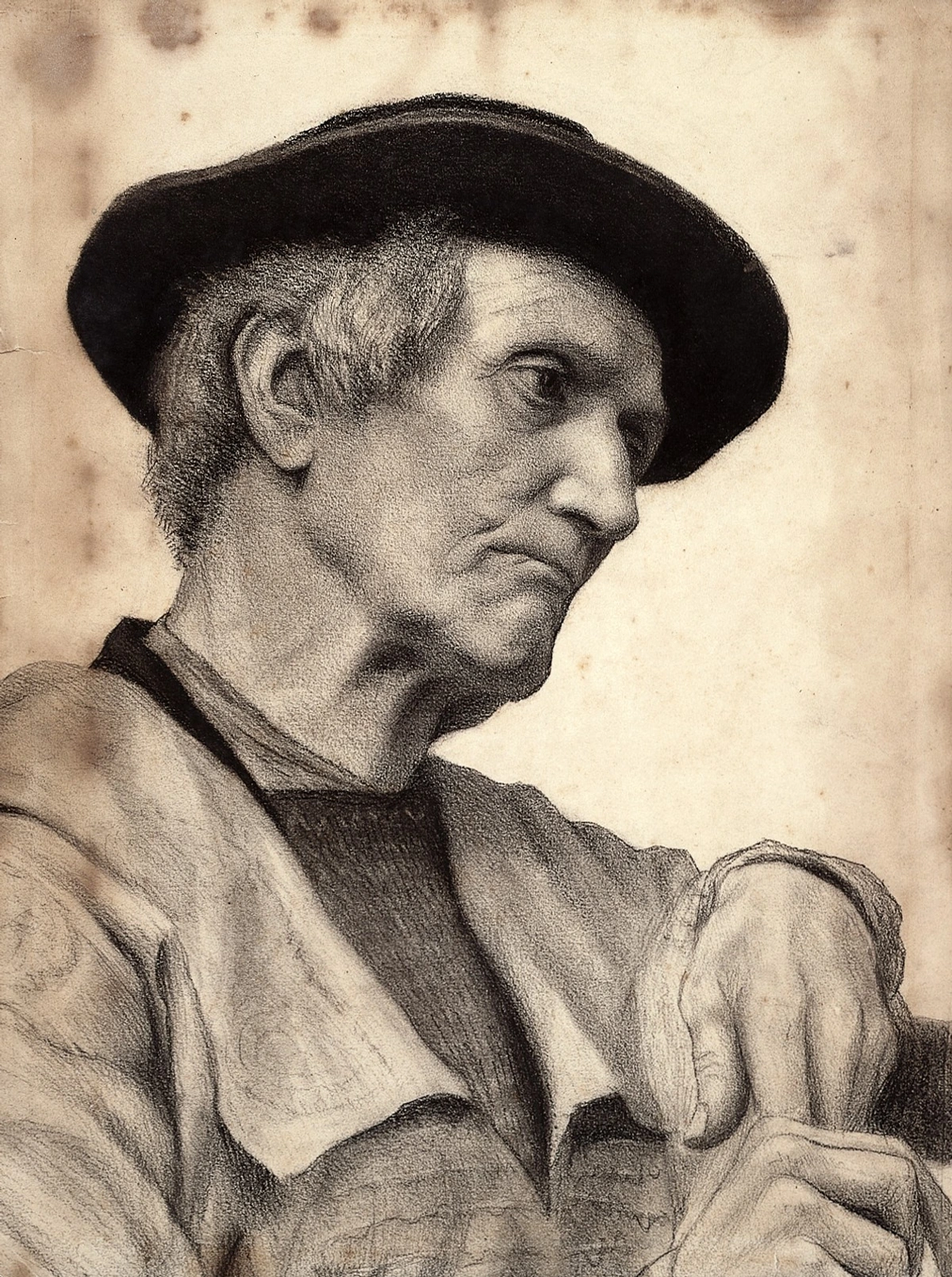
My Toolkit: From Vine to Compressed, and Everything In Between
Moving from the philosophy to the practicalities, let's talk about the raw materials. When it comes to the actual tools, charcoal offers a surprising variety, each with its own personality and a distinct dance with the surface you choose. I've spent a fair bit of time just messing around, figuring out what works for what effect. For a deeper dive into the technical side, you might want to check out my article on understanding and using charcoal for drawing.
Here's my personal take on the essentials, learned through many dusty hours in the studio – and believe me, there's always dust!:
Charcoal Type | Feel & Handling | Intensity & Erasability | Best Use |
|---|---|---|---|
| Vine Charcoal | Wonderfully soft, crumbly, light touch | Light, wispy marks, highly erasable | Initial sketches, delicate washes, soft transitions, preparatory work |
| Compressed Charcoal | Dense, solid, holds shape well, glides smoothly | Rich, dark, intense, less erasable | Deep blacks, final accents, layering for velvety tones, strong lines |
| Charcoal Pencils | Precise, controlled, like a graphite pencil | Varied hardness (HB-8B), good control | Fine details, crisp lines, textures where sticks are too broad |
| Powdered Charcoal | Fine, loose powder, messy but versatile | Broad washes, diffuse tones, blends easily | Large atmospheric effects, painting with shadow, smooth gradients |
For those deeper, intense blacks, compressed charcoal is your best friend. But a quick note on lightfastness: generally, charcoal isn't the most lightfast medium, especially vine charcoal. For serious, permanent art pieces that you intend to sell (perhaps like pieces you'd find here), it's crucial to use a good quality fixative to protect against smudging and fading over time. This makes the permanence of the artwork more reliable.
And while we're on tools, don't forget the paper! The tooth of your paper – how textured it is – makes a huge difference. A smoother paper, like a hot-press watercolor paper, gives you subtle blends and delicate effects, almost like working with a pencil. In contrast, a rougher surface, like Ingres or pastel paper, really grabs the charcoal, creating wonderfully granular textures, allowing darks to become richer and holding more pigment. For example, the detailed texture in the old man's portrait above would have benefited from a paper with a good tooth to capture those nuanced shadows. It's truly about finding the right surface to compliment your charcoal.

credit, licence
Masters of Shadow: My Charcoal Inspirations
While my journey with charcoal is deeply personal, I’d be remiss not to acknowledge the giants who have explored its depths. Artists like Käthe Kollwitz, with her emotionally charged, raw portraits, have always resonated with me because of her unflinching honesty and ability to convey profound suffering and resilience through stark contrasts, often addressing social commentary directly. Or Georges Seurat, who used conté crayon (a form of compressed charcoal) to build luminous, atmospheric drawings, inspiring me with his meticulous layering to create incredible depth and light, almost a scientific approach to vision. And in a more contemporary vein, the incredible realism of Robert Longo's charcoal drawings pushes the boundaries of what this humble medium can achieve, demonstrating a breathtaking mastery of form, detail, and monumental scale. Their works remind me of the endless possibilities within black and white, inspiring me to keep pushing my own boundaries and challenging what I thought charcoal could do in my own artistic development, a journey you can trace on my timeline.
Charcoal in My Abstract World: A Secret Weapon for Depth and Texture
Now, I know what you might be thinking: "Wait, this artist is known for vibrant, often abstract, paintings. Where does humble black charcoal fit into that colorful world?" Well, it's often the unsung hero, the silent foundation beneath the layers of color, a secret weapon in my abstract toolkit. Sometimes, I'll start an abstract piece with a dynamic charcoal drawing, laying down the initial gestural marks and energy. I might sketch out a loose grid or a series of energetic lines with vine charcoal to guide the placement of my first color blocks, giving the eventual painting an invisible but powerful structural backbone.
For example, I might lay down a bold gestural sketch with vine charcoal, then build up layers of thick, impasto acrylics over it, allowing some of the charcoal lines to peek through translucent glazes. Imagine a thin wash of ultramarine blue revealing a ghost of a charcoal line beneath – that subtle tension creates a gritty honesty and an underlying narrative, rooting the abstract composition. It helps me to find my voice and establish a rhythm before color even enters the scene, grounding the work with primal energy.
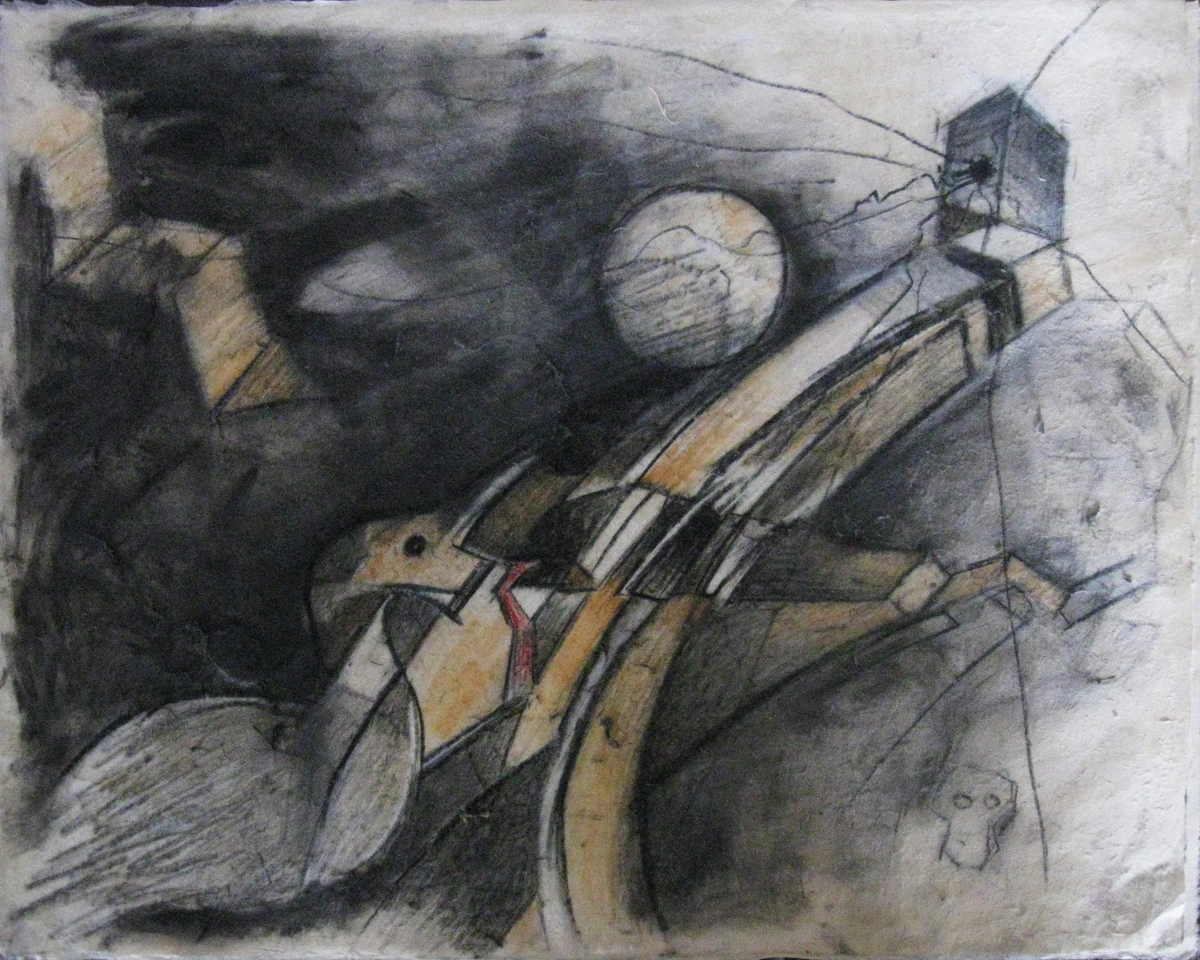
It's also fantastic for exploring texture within an abstract piece, even if it's just peeking through. I've experimented with using charcoal over dried acrylics, perhaps by scrubbing powdered charcoal into the textured peaks of a finished painting, or even mixing powdered charcoal into a medium for a gritty, textural paste. Imagine the raw, energetic lines of charcoal beneath a vibrant wash of acrylic – the charcoal's texture, though partially obscured, still vibrates, giving the painting a gritty honesty and an underlying narrative. It adds a kind of primal energy to the abstract work, a grounding force, informing the spontaneous and emotional depth I often strive for in my abstract pieces.
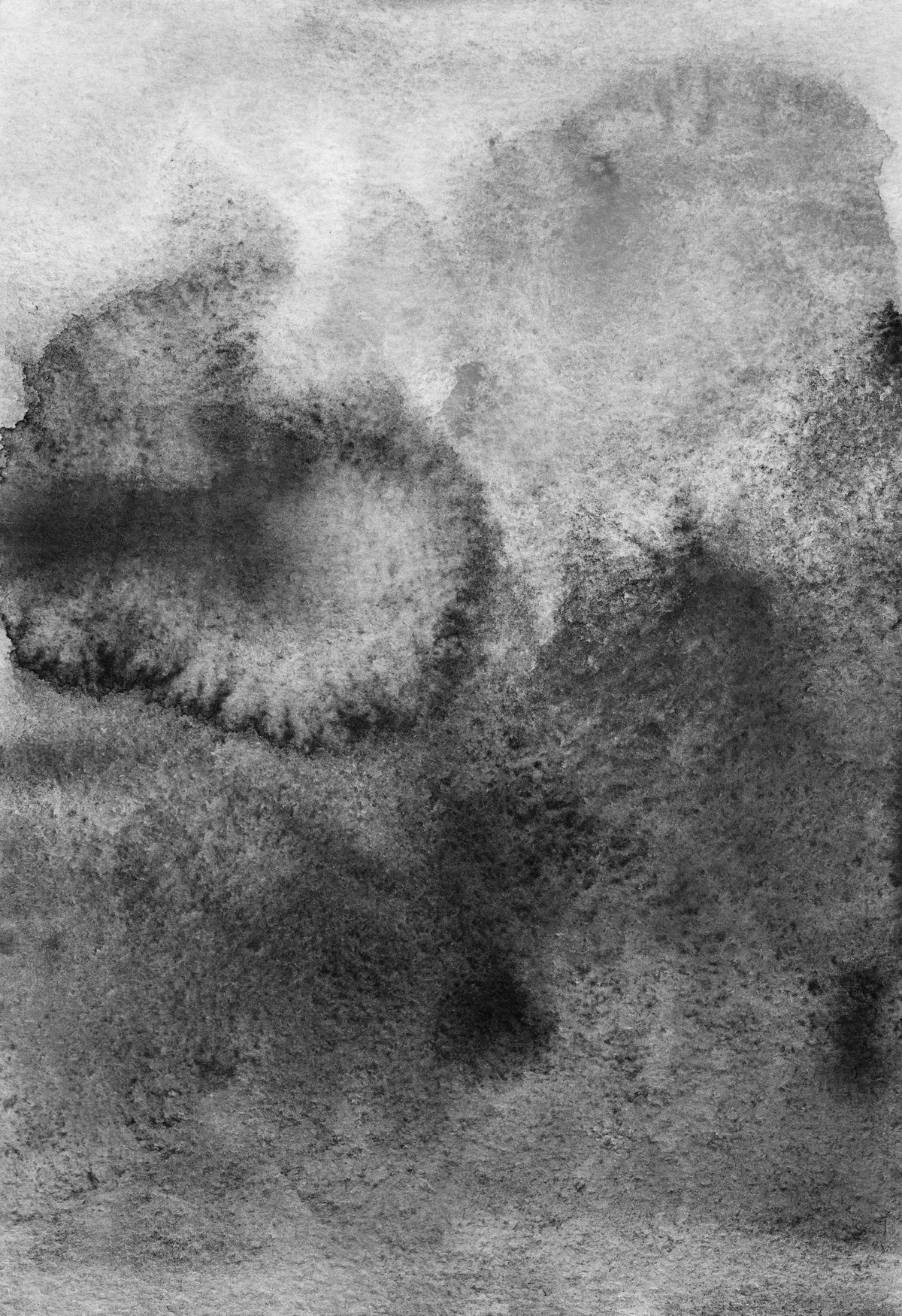
The Meditative Practice of Charcoal Drawing: Finding Stillness
Beyond the aesthetics and techniques, there's a profound, almost meditative quality to working with charcoal. It forces you to slow down, to really observe. Because you're dealing primarily with light and shadow, your eye becomes incredibly sensitive to subtle shifts in tone. It's a fantastic way to sharpen your observational skills and learn about the world in a more nuanced way. I often use it for quick gesture studies or thumbnail sketches, where the immediacy of the medium helps me capture the essence of a pose or composition without getting bogged down in details. It can also be a powerful tool for overcoming creative blocks, as its focus on fundamental elements like form and value allows you to bypass the complexities of color and simply make marks again.
There's something deeply satisfying about the tactile nature of it too – the way the stick glides or crumbles, the whisper of the blender. It brings me into a state of creative flow that's hard to replicate. It's less about the final product, and more about the journey of making marks, of responding to the paper, and simply being present with the medium. This focus is a rare gift in our noisy world, a journey into presence, a slow dance with the paper that brings a rare stillness. And if you're curious, you can see some of my charcoal works for sale here. What unexpected lessons has art taught you?
FAQ: Your Charcoal Queries, My Honest Answers
Got some burning questions about charcoal? Here are a few I get asked, and my honest take on them.
Q: Is charcoal drawing messy? A: Oh, absolutely. Gloriously so! Expect dust on your hands, your clothes, your drawing surface. But that's part of its charm. Embrace the mess, and maybe invest in some cheap gloves if you're going for super dark areas. A little dust is a small price to pay for such expressive power.
Q: How do you fix charcoal drawings? A: With fixative spray! There are two main types: workable fixative lets you build layers on top of it, while a final fixative seals the deal, protecting your work and ensuring its longevity. But here’s the kicker: it will darken your values, sometimes quite dramatically, so always test on a scrap piece first to understand the effect on your specific work. And honestly, some of the beauty is in its delicate nature, isn't it? Like a fleeting thought, it's not meant to be entirely rigid.
Q: How should I store charcoal drawings to prevent smudging and damage? A: Ah, the eternal charcoal dilemma! The best way is to place a sheet of glassine paper (a semi-transparent, smooth, non-abrasive, and crucially, acid-free paper) over your drawing before storing it flat. Glassine is preferred because it won't stick to the charcoal or react with the pigments over time. You can also use a portfolio or seal it in a clear plastic sleeve. For long-term protection against light damage, keep them out of direct sunlight and consider archival storage boxes. Framing under glass is also an excellent option for finished pieces!
Q: Can beginners use charcoal? A: Absolutely, emphatically YES! In fact, I think it's one of the best mediums for beginners to learn about value, form, and composition without getting bogged down by color theory. It's forgiving (hello, eraser!) and incredibly expressive from the get-go. Just grab some vine charcoal and a cheap sketchpad, and go wild. Don't overthink it, just start making marks.
Q: What kind of paper is best for charcoal?
A: Honestly, it depends on the effect you're after. For very deep blacks and rich textures, a paper with a pronounced tooth like a good quality pastel paper or Ingres paper is ideal as it truly grabs the pigment. For softer, more ethereal effects and subtle blends, a smoother paper like hot-press watercolor paper can work beautifully, though it won't hold as much charcoal. The more texture, the more charcoal it'll hold, and often, the richer your darks can be. It's about finding the right surface to compliment your charcoal, whether you're aiming for precision or broad, sweeping gestures.
Q: Do you use charcoal in your abstract paintings that are for sale online or at the museum? A: Sometimes, yes! As I mentioned, it often acts as an underpainting, setting the initial mood and structure before the vibrant acrylics come in. You might not always see it directly in the finished abstract piece, but its essence is there, informing the depth and energy. It's a foundational element for many of my works. If you visit my timeline, you can often see how charcoal played a role in my artistic development.
The End of My Charcoal Love Affair? Not a Chance.
So, my journey with charcoal has been a winding path of discovery, frustration, and ultimately, deep appreciation. It taught me to loosen up, to value the ephemeral, and to find beauty in the rawest of expressions. It's a medium that challenges and rewards in equal measure, and one I continue to turn to, whether I'm sketching out a new idea, diving into a portrait study, or building the foundation for a complex abstract piece. From its ancient origins to its vital role in contemporary art and my own abstract practice, charcoal remains a constant source of inspiration and growth. If you haven't explored it, I wholeheartedly encourage you to give it a try. Who knows? You might just find your own kind of magic in the dust, and perhaps, a deeper connection to the timeless art of mark-making. I'd love to hear about your own charcoal adventures!




